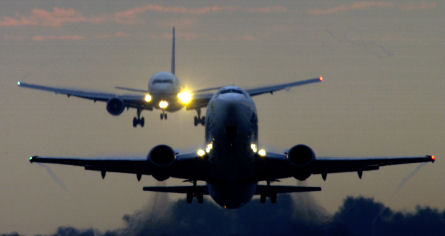With its Single European Sky concept of operations for future air traffic management, Europe plans to enable aircraft journeys to become shorter, quicker, and less polluting, while delivering three times the traffic capacity that the skies can handle today, the SESAR commission's "Target Concept" report declares.
Great stuff. Just one problem: there is a severe shortage of runway capacity at the major hubs. Unless more runways were to be provided by the time the new ATM system begins to produce faster, more direct trajectories, aeroplanes would increasingly end their ultra-efficient transit in holding patterns waiting for a landing slot, pointlessly raising global warming and the passengers' blood pressure.
Earlier Eurocontrol studies have made clear just how bad the runway shortage is. Even back in 2001 it was estimated that 30 of Europe's major airports handling 70% of the continent's passengers and freight were close to capacity. By 2020, Eurocontrol has calculated, 60 of the region's airports will be severely congested and the top 20 of those will be "saturated". Demand for travel will considerably exceed the system's capacity, and Europe's economy would suffer, the study predicted. 2020 is the date by which, according to SESAR, airspace capacity could be three times what it is today.
|
|---|
More runways are neede to get benefits of Single Sky |
This is a major headache for Europe's politicians, who have to make decisions balancing economic growth and freedom to travel against pollution and global warming. In some regions, new high-speed rail links are extending the appeal of surface travel over distances that previously were the province of air travel. The trouble is that rail infrastructure is massively more expensive to create and to maintain than aviation infrastructure, and governments that want a relatively ecologically friendly transport mode like rail that people will actually use will have to hand out big subsidies to make it work. Expensive, empty trains would contribute more to global warming than an aviation industry flying full aeroplanes that are given the go-ahead to create their own, fully paid-for airport infrastructure with no government subsidy.
SESAR predicts the industry can deliver the goods with continually reducing emissions per passenger kilometre, providing governments do not choke it at airports. Choked airports would create the airborne equivalent of immobile traffic jams on arterial roads, and nobody argues those are good for economic efficiency or global warming.
Source: Flight International























